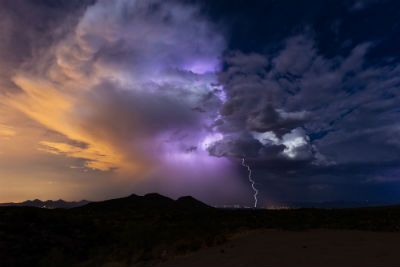
After making landfall in Florida’s Big Bend area, Tropical Storm Elsa is churning up the state’s West Coast today on its way to Georgia, the Carolinas and Virginia and is expected to be packing lots of rain when it arrives here on Thursday.
Heavy tropical rains can create flash flooding in low lying areas as lakes, rivers and creeks rise and water starts ponding on roads. Most flood deaths happen in vehicles and AAA is reminding drivers to Turn Around, Don’t Drown (National Weather Service) when they come upon standing water on a roadway.
Each year, flooding causes more deaths than any other storm related hazard. It’s often because people underestimate how fast the water is moving and how powerful rushing water can be.
“Many drivers view rain from tropical systems like Elsa as more of an inconvenience than a hazard,” said Morgan Dean, public affairs specialist for AAA Mid-Atlantic. “Because of that, drivers tend to be less cautious than they should be. The most important steps to take when driving in wet conditions are to buckle up, slow down, and keep a safe distance between you and the car in front of you. If you can, wait until the storm has cleared and it is safe to venture out.”
10 safety tips for wet weather driving
- Ponding on roads: As little as six inches of water can cause you to lose control of your car and potentially stall your engine. Twelve inches of rushing water can carry away most cars. Around two feet can quickly carry away a truck or SUV. Turn around, Don’t Drown.
- Seek higher ground: If your vehicle stalls or is suddenly caught in rising water, leave it immediately.
- Never drive through standing water: Standing water can be deceiving and drivers should avoid it. No matter how shallow it may appear, water may be concealing downed power lines, be deeper than it appears, or have significant force from flooding, etc.
- Slow down, brake early and drive with greater caution and alertness: Drivers are more likely to lose control of the vehicle when roads are wet so reduce speed and keep your eyes and mind on the road. Brake early, but not hard, to allow the time needed to slow the car down.
- Increase following distance: This is even more important when driving near vans, recreational vehicles and cars pulling trailers that may be adversely affected by wet roads and wind.
- Use the central lanes: When driving during heavy rain, use center lanes of the road (without straddling the yellow line). Avoid outside lanes where the water collects at curbside.
- Know your vehicle: Light cars, vans and other “boxy” vehicles have a tendency to be feel more impacts of strong gusts of wind. If you feel unsafe, pull over and if possible seek shelter until you feel safe to drive again.
- Watch for hydroplaning: No car is immune from hydroplaning on wet surfaces, including four-wheel drive vehicles. Even if brakes work under normal conditions that doesn’t mean they will react the same on slippery roads where tires roll with less traction. Also, turn off cruise control as it can cause hydroplaning.
- Use your defroster: Keep the air inside your car dry and prevent windows from fogging by using your defroster along with your air conditioner.
- Take the nearest exit: If conditions worsen to the point where there is any doubt about your safety, take the nearest exit. Don’t just stop on the shoulder or under a bridge. If your visibility is compromised, other drivers may be struggling too.
The Mid-Atlantic Foundation for Safety and Education offers more wet weather driving tips here.










